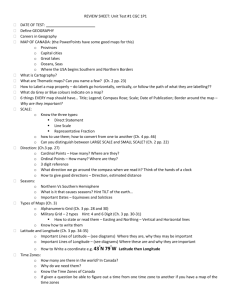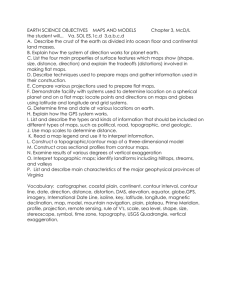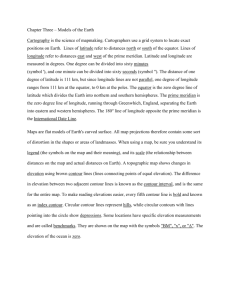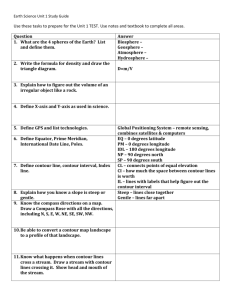Chapter 3
advertisement
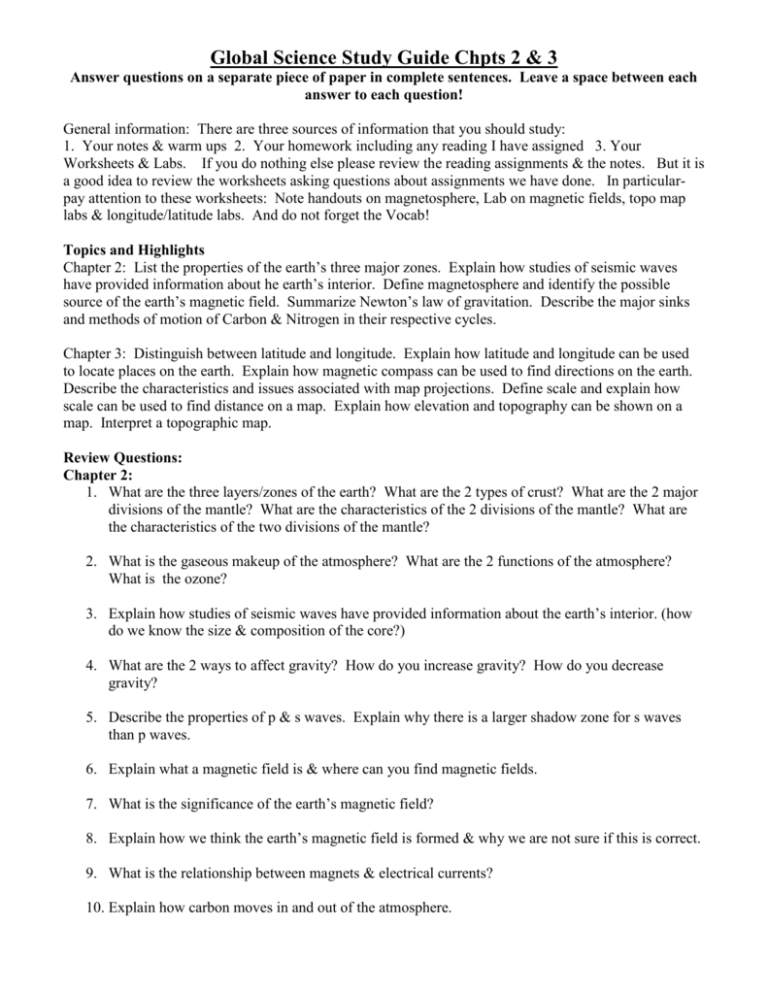
Global Science Study Guide Chpts 2 & 3 Answer questions on a separate piece of paper in complete sentences. Leave a space between each answer to each question! General information: There are three sources of information that you should study: 1. Your notes & warm ups 2. Your homework including any reading I have assigned 3. Your Worksheets & Labs. If you do nothing else please review the reading assignments & the notes. But it is a good idea to review the worksheets asking questions about assignments we have done. In particularpay attention to these worksheets: Note handouts on magnetosphere, Lab on magnetic fields, topo map labs & longitude/latitude labs. And do not forget the Vocab! Topics and Highlights Chapter 2: List the properties of the earth’s three major zones. Explain how studies of seismic waves have provided information about he earth’s interior. Define magnetosphere and identify the possible source of the earth’s magnetic field. Summarize Newton’s law of gravitation. Describe the major sinks and methods of motion of Carbon & Nitrogen in their respective cycles. Chapter 3: Distinguish between latitude and longitude. Explain how latitude and longitude can be used to locate places on the earth. Explain how magnetic compass can be used to find directions on the earth. Describe the characteristics and issues associated with map projections. Define scale and explain how scale can be used to find distance on a map. Explain how elevation and topography can be shown on a map. Interpret a topographic map. Review Questions: Chapter 2: 1. What are the three layers/zones of the earth? What are the 2 types of crust? What are the 2 major divisions of the mantle? What are the characteristics of the 2 divisions of the mantle? What are the characteristics of the two divisions of the mantle? 2. What is the gaseous makeup of the atmosphere? What are the 2 functions of the atmosphere? What is the ozone? 3. Explain how studies of seismic waves have provided information about the earth’s interior. (how do we know the size & composition of the core?) 4. What are the 2 ways to affect gravity? How do you increase gravity? How do you decrease gravity? 5. Describe the properties of p & s waves. Explain why there is a larger shadow zone for s waves than p waves. 6. Explain what a magnetic field is & where can you find magnetic fields. 7. What is the significance of the earth’s magnetic field? 8. Explain how we think the earth’s magnetic field is formed & why we are not sure if this is correct. 9. What is the relationship between magnets & electrical currents? 10. Explain how carbon moves in and out of the atmosphere. 11. Explain how nitrogen moves in and out of the atmosphere. 12. What factors affect both the carbon and nitrogen cycle? 13. How do you affect the C cycle? N cycle? Chapter 3 1. Define latitude. What is another name for a latitude line? What is the main latitude line? 2. Define longitude line. What is another name for a longitude line? What is the main longitude line? 3. Define magnetic declination. Define geomagnetic north. Define geographic north. 4. Using time, how do you know how many degrees you are east or west of the Prime Meridian? 5. Using degrees, how do you know what time it is in Greenwich England, if we live at 120˚ W? 6. Define legend. Define scale. What is a fractional scale and what does it mean? Know how to use a map scale to calculate distances on a map. 7. Who makes topo maps in the united states? 8. Describe three ways to represent scale and give an example of each. 9. Define contour line. Define contour interval. Define index contour. Define depression contour. 10. Explain how to find the contour intervals on a map & how to find the elevation of a specific point. 11. Explain how to find the slope on a topo map. 12. How do contour lines on a topo map indicate steep slopes? Gradual slopes? Valleys? Mountain tops/peaks?


